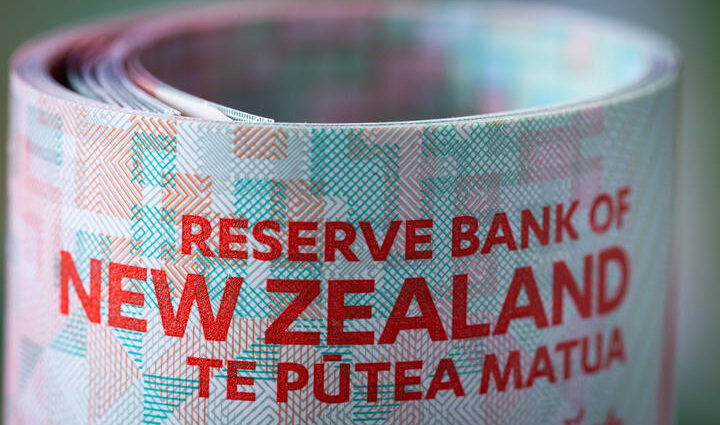PHOTO: The Reserve Bank of New Zealand (RBNZ). FILE
The Reserve Bank of New Zealand (RBNZ) is set to make its next Official Cash Rate (OCR) decision next week. BNZ economists are predicting a 25 basis points cut, citing that “inflation is beaten and the economy is buckling. To delay risks adding to the pressures facing the economy.” Kiwibank’s chief economist, Jarrod Kerr, notes that unemployment is rising, and confidence in the economy remains at recessionary levels.
On Wednesday, the RBNZ will announce its next OCR decision. What can we expect?
Kiwibank’s Jarrod Kerr described the upcoming RBNZ meeting as “the economist’s Superbowl.” He stated, “Overly restrictive monetary policy has inflicted much pain and tamed the inflation beast. Households and businesses are struggling. Almost all data have come out on the weaker side of expectations and well below RBNZ estimates. Unemployment is rising swiftly, and confidence in the economy remains at recessionary levels. It’s been two years of recession.”
Kiwibank economists are recommending a cut next week, followed by further cuts at each meeting until the cash rate hits 2.5%. “Neutral is around 2.75% according to the RBNZ. We need to get back to a neutral, no longer restrictive, setting. And if anything, we need a bit of stimulus. But even under this scenario, more cuts are priced into the market near term. We would recommend 75bps by November.” However, they are not entirely convinced the RBNZ will act next week, considering the credibility issue for the RBNZ’s forecasting team after pushing out rate cuts and raising the probability of rate hikes in May.
Westpac’s Chief Economist, Kelly Eckhold, mentioned that economic activity appears weaker than previously expected, which should help moderate domestic inflation pressures over time. “With inflation likely to move back inside the 1-3% target range in the September quarter, we expect the RBNZ will begin tempering policy restriction at the October Review. The pace and extent of subsequent policy easing will depend on how quickly inflation pressures fall to levels more consistent with the 2% target midpoint.”
BNZ economists are forecasting a 25bps cut next week. “Inflation is beaten and the economy is buckling. To delay risks adding to the pressures facing the economy. There’s still a heap of uncertainty about which meeting the RBNZ uses to get started,” said BNZ Head of Research Stephen Toplis. “We’re more confident in our view that the OCR will be 100bps lower by February next year.”
Westpac economists expect the OCR to be cut to 5.25% in the RBNZ’s October meeting. Meanwhile, Kelly Eckhold stated that Westpac’s new forecasts show weaker growth and a higher unemployment rate, expecting the OCR to be cut to 5.25% in October, down to 5% by year-end, and 4.5% in May 2025. “We continue to see the OCR troughing at 3.75% in early 2026.”
The slowness in cuts is because Westpac does not believe the central bank will embark on a “more sudden or protracted easing path” as domestic inflation remains high. “We continue to see core inflation measures falling relatively slowly – albeit more surely – in the year ahead. So, while there is certainly a case for reducing the degree of restriction, we don’t see the RBNZ being keen on getting too far ahead of itself and moving quickly toward or into easy territory. Rather, we expect the RBNZ to take a measured and data-dependent approach.”
So, what might this do to house prices?
BNZ Chief Economist Mike Jones predicted in June a 3% lift in house prices over the second half of this year, followed by a 7% increase through next year. “We’ve seen nothing in the run of play since to throw us off this view.”
However, several scenarios could unfold. Firstly, house prices could grow at double BNZ’s expectations through 2024 (+14%), pulling affordability back down to near December 2021 lows. If the RBNZ delivers early 2024 interest rate cuts, this could provide a small boost to affordability.
Finally, in a possible but unlikely scenario where household income growth holds at a healthy 7% and house prices flat-line for the next two years, BNZ’s affordability index could soar above pre-Covid levels, he said. “Stretched affordability will be a key factor limiting the extent of house price gains next year (we forecast a 7% lift). Still-high mortgage rates and a slackening labour market are the other factors expected to keep a lid on things.”
SOURCE: STUFF















